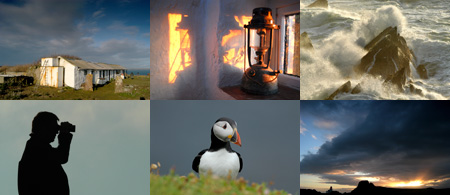
So often, on returning from a holiday or expedition, people are heard to say, ‘ These pictures don’t do justice to the experience!’ Don’t be in this position again!
Over the years photography has been a great way to tell a story. Its zenith occurred during the rise of the picture magazines like Life and Picture Post and of course all moving images are in reality a vast sequence of stills! A narrative suggests that the event photographed will have a beginning, a middle and an end. The time scale that this occurs within does not matter at all. The narrative can occur over a few seconds, minutes, hours or days.
Time spent on holiday, from beginning to end, could be considered a narrative in the same way that a walk you take whist on your holiday could also be viewed as a narrative despite them involving different time scales. The time you spend away from home could be broken down into a series of small narratives, which when brought together give a real sense of the holiday.
A narrative can also act as a framework in which beautifully crafted images are allowed to shine, giving them a sense of place and context.
Often, on returning from a holiday or an expedition, there appears to be no cohesion to the images and significant gaps are suddenly apparent and on looking at the work you wish you could return to fill the gaps and bring a form of structure or narrative to the images.
If you can imagine yourself back at home after the event looking at the images you took then you will begin to fill some of those gaps and be less disappointed on your return. You need to ask yourself a number of questions before you start photographing on holiday:-
- Do you want to photograph the experience as a whole or just disparate single images? There is no right or wrong answer but, as long as you have established clearly what it is you want to do before you start, then you wont be disappointed when you return with your images.
- Who will be looking at your images? Photography is all about communication and this implies a third party, whether it be family, friends or professional colleagues. Again, imagine yourself showing your images once you have returned and then translate this to the present so that your images become targeted to the audience. It may be that the images are solely for yourself and, if this is so ,then you become your own audience and again you must ask yourself what you would like to be looking at in six months time.
By approaching some aspects of the holiday in a narrative style you are at least likely to be in position to place other images in a wider context and begin to make sense out of the overall experience. This could be useful in the future for a whole variety of reasons. You may wish to show the images to a group in a PowerPoint or Keynote presentation:-
- a walk along a particular path or route. Think about taking photographs that will place the single images you take into a wider framework.
- the structure of the day – this need not be all encompassing but rather a loose framework within which other images will sit. Think about intervals of time – break the day up into sections and be sure to photograph during these times. You will be able to locate times and dates via the Meta data on digital files.
- small details, which will remind you of the layout of places, buildings, rooms etc.
- the interaction of people on your holiday. This may be another narrative that presents itself (depending on the type of holiday you go on) – meal times, get togethers, evening times, discussions and people in the field. In a sense this becomes a documentary approach and can be one of the most effective narratives to work within.
- the weather during the week, which can build to a narrative that can be included with weather charts and maps and can therefore frame the whole week.
The main point is returning with something that makes sense of the experience you have just had. If you can do that then you will have achieved a great deal and not be disappointed when you begin to share the experience with others.
